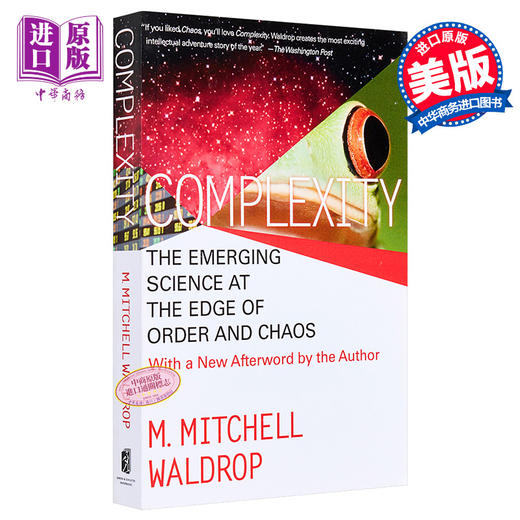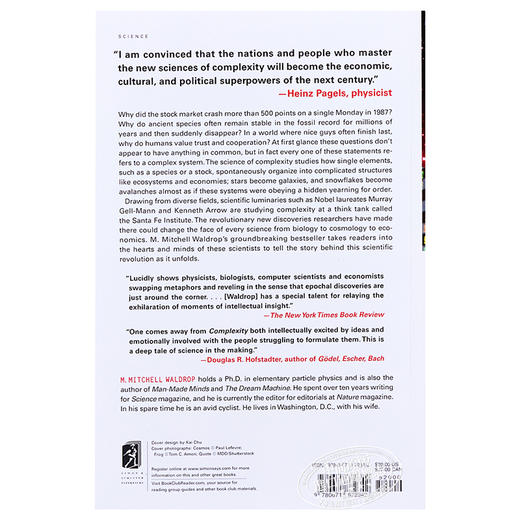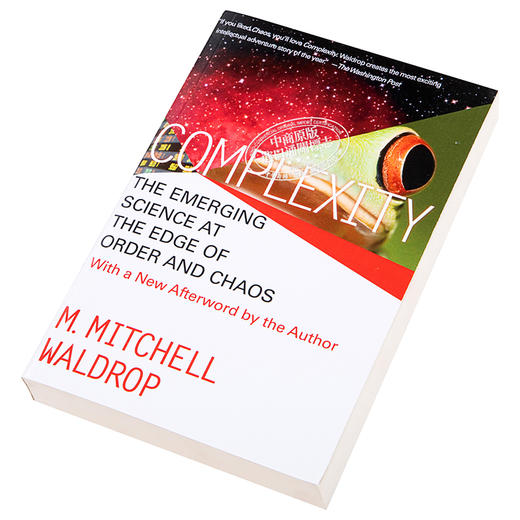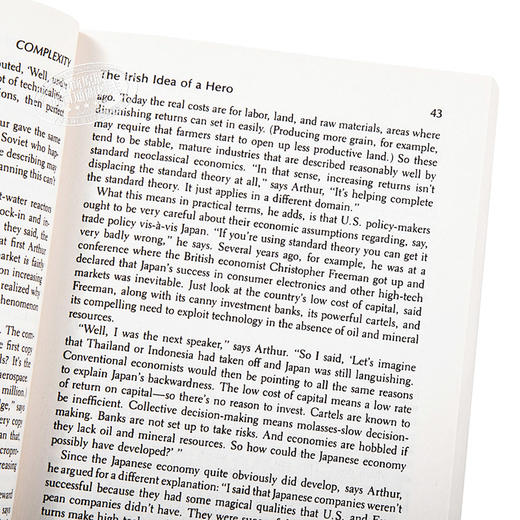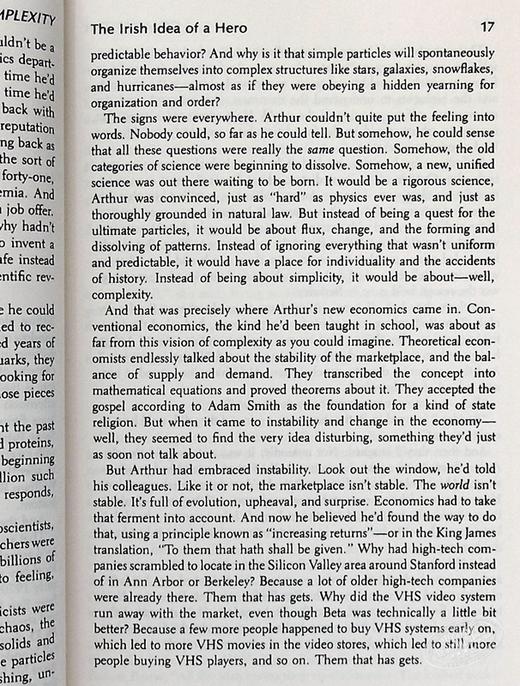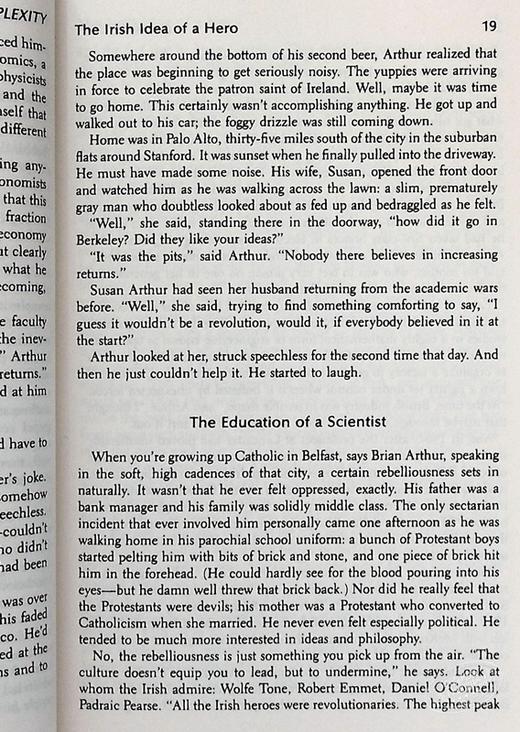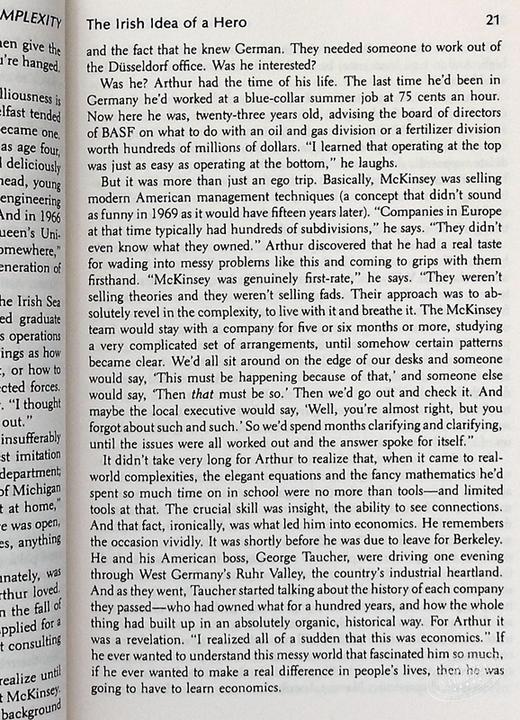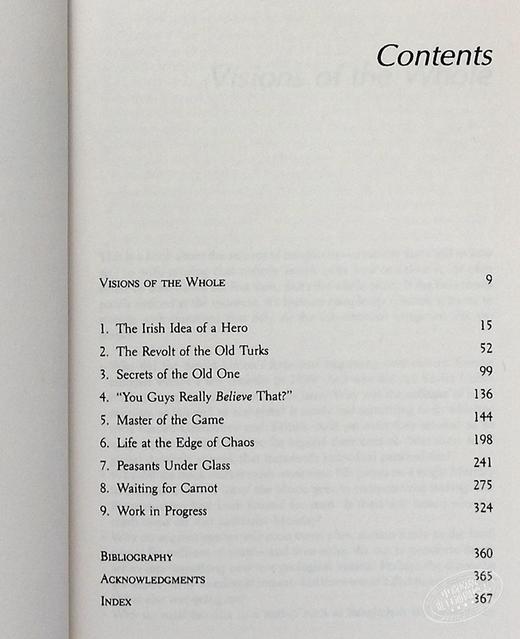预售 【中商原版】复杂 Complexity 诞生于秩序与混沌边缘的科学 英文原版 Mitchell Waldrop
| 运费: | 免运费 |
| 库存: | 1 件 |
商品详情
Complexity: The Emerging Science at the Edge of Order and Chaos
内容简介
Why did the stock market crash more than 500 points on a single Monday in 1987? Why do ancient species often remain stable in the fossil record for millions of years and then suddenly disappear? In a world where nice guys often finish last, why do humans value trust and cooperation? At first glance these questions don't appear to have anything in common, but in fact every one of these statements refers to a complex system. The science of complexity studies how single elements, such as a species or a stock, spontaneously organize into complicated structures like ecosystems and economies; stars become galaxies, and snowflakes avalanches almost as if these systems were obeying a hidden yearning for order.
Drawing from diverse fields, scientific luminaries such as Nobel Laureates Murray Gell-Mann and Kenneth Arrow are studying complexity at a think tank called The Santa Fe Institute. The revolutionary new discoveries researchers have made there could change the face of every science from biology to cosmology to economics. M. Mitchell Waldrop's groundbreaking bestseller takes readers into the hearts and minds of these scientists to tell the story behind this scientific revolution as it unfolds.
媒体推荐
The Washington Post If you liked Chaos, you'll love Complexity. Waldrop creates the most exciting intellectual adventure story of the year.
Heinz Pagels physicist I am convinced that the nations and people who master the new sciences of complexity will become the economic, cultural, and political superpowers of the next century.
The New York Times Book Review Lucidly shows physicists, biologists, computer scientists and economists swapping metaphors and reveling in the sense that epochal discoveries are just around the corner....[Waldrop] has a special talent for relaying the exhilaration of moments of intellectual insight.
Douglas R. Hofstadter author of Götel, Esther, Bach One comes away from Complexity both intellectually excited by ideas and emotionally involved with the people struggling to formulate them. This is a deep tale of science in the making.
作者简介
M. Mitchell Waldrop has his doctorate in elementary particle physics and is the author of Man-Made Minds. He spent ten years as a senior writer for Science magazine, where he is now a contributing correspondent.
目录
Contents
Visions of the Whole
1. The Irish Idea of a Hero
2. The Revolt of the Old Turks
3. Secrets of the Old One
4. "You Guys Really Believe That?"
5. Master of the Game
6. Life at the Edge of Chaos
7. Peasants Under Glass
8. Waiting for Carnot
9. Work in Progress
Bibliography
Acknowledgments
Index
文摘
Chapter 1
The Irish Idea of a Hero
Sitting alone at his table by the bar, Brian Arthur stared out the front window of the tavern and did his best to ignore the young urban professionals drifting in to get an early start on Happy Hour. Outside, in the concrete canyons of the financial district, the typical San Francisco fog was turning into a typical San Francisco drizzle. That was fine by him. On this late afternoon of March 17, 1987, he wasn't in the mood to be impressed with brass fittings, ferns, and stained glass. He wasn't in a mood to celebrate Saint Patrick's Day. And he most definitely wasn't in a mood to carouse with ersatz Irishmen wearing bits of green on their pinstripes. He just wanted to silently sip his beer in frustrated rage. Stanford University Professor William Brian Arthur, native son of Belfast, Northern Ireland, was at rock bottom.
And the day had started so well.
That was the irony of it all. When he'd set out for Berkeley that morning, he'd actually been looking forward to the trip as a kind of triumphal reunion: local boy makes good. He'd really loved his years in Berkeley, back in the early 1970s. Perched on the hillsides north of Oakland, just across the bay from San Francisco, it was a pushy, vital, alive kind of place full of ethnics and street people and outrageous ideas. Berkeley was where he'd gotten his Ph. D. from the University of California, where he'd met and married a tall blonde doctoral student in statistics named Susan Peterson, where he'd spent his first "postdoc" year in the economics department. Berkeley, of all the places he'd lived and worked ever since, was the place he wanted to come home to.
Well now he was coming home, sort of. The event itself wouldn't be a big deal: just lunch with the chairman of the Berkeley economics department and one of his former professors there. But it was the first time he'd come back to his old department in years, and certainly the first time he'd ever done so feeling like an academic equal. He was coming back with twelve years of experience working all over the globe and a major reputation as a scholar of human fertility in the Third World. He was coming back as the occupant of an endowed chair of economics at Stanford -- the sort of thing that rarely gets handed out to anyone under age fifty. At age forty-one, Arthur was coming back as someone who had made it in academia. And who knew? The folks at Berkeley might even start talking about a lob offer.
Oh yes, he'd really been high on himself that morning. So why hadn't he, years ago, just stuck to the mainstream instead of trying to invent a whole new approach to economics? Why hadn't he played it safe instead of trying to get in step with some nebulous, half-imaginary scientific revolution?
Because he couldn't get it out of his head, that's why. Because he could see it almost everywhere he looked. The scientists barely seemed to recognize it themselves, most of the time. But after three hundred years of dissecting everything into molecules and atoms and nuclei and quarks, they finally seemed to be turning that process inside out. Instead of looking for the simplest pieces possible, they were starting to look at how those pieces go together into complex wholes.
He could see it happening in biology, where people had spent the past twenty years laying bare the molecular mechanisms of DNA, and proteins, and all the other components of the cell. Now they were also beginning to grapple with the essential mystery: how can several quadrillion such molecules organize themselves into an entity that moves, that responds, that reproduces, that is alive?
He could see it happening in the brain sciences, where neuroscientists, psychologists, computer scientists, and artificial intelligence researchers were struggling to comprehend the essence of mind: How do those billions of densely interconnected nerve cells inside our skulls give rise to feeling, thought, purpose, and awareness?
He could even see it happening in physics, where the physicists were still trying to come to terms with the mathematical theory of chaos, the intricate beauty of fractals, and the weird inner workings of solids and liquids. There was profound mystery here: Why is it that simple particles obeying simple rules will sometimes engage in the most astonishing, unpredictable behavior? And why is it that simple particles will spontaneously organize themselves into complex structures like stars, galaxies, snowflakes, and hurricanes -- almost as if they were obeying a hidden yearning for organization and order?
The signs were everywhere. Arthur couldn't quite put the feeling into words. Nobody could, so far as he could tell. But somehow, he could sense that all these questions were really the same question. Somehow, the old categories of science were beginning to dissolve. Somehow, a new, unified science was out there waiting to be born. It would be a rigorous science, Arthur was convinced, just as "hard" as physics ever was, and just as thoroughly grounded in natural law. But instead of being a quest for the ultimate particles, it would be about flux, change, and the forming and dissolving of patterns. Instead of ignoring everything that wasn't uniform and predictable, it would have a place for individuality and the accidents of history. Instead of being about simplicity, it would be about -- well, complexity.
基本信息
作者:Mitchell M. Waldrop
出版社: Simon & Schuster (1993年9月1日)
平装: 384页
语种: 英语
ISBN: 0671872346
条形码: 9780671872342
商品尺寸: 14 x 2.8 x 21.4 cm
商品重量: 363 g
ASIN: 0671872346
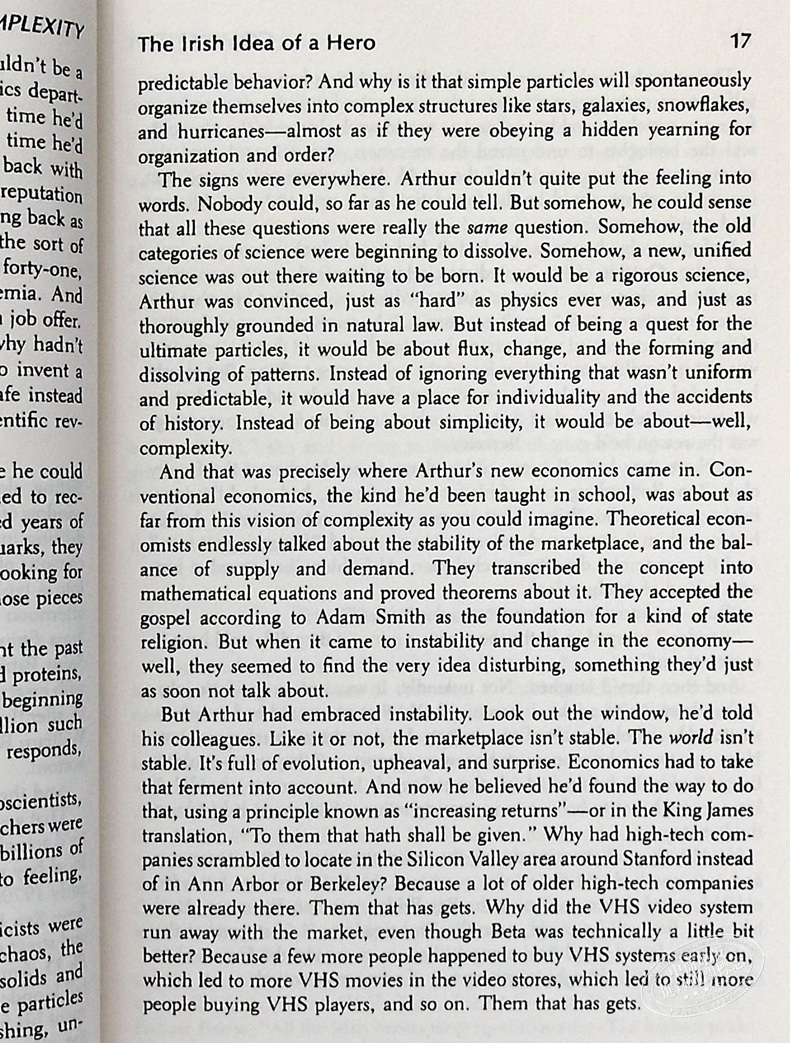

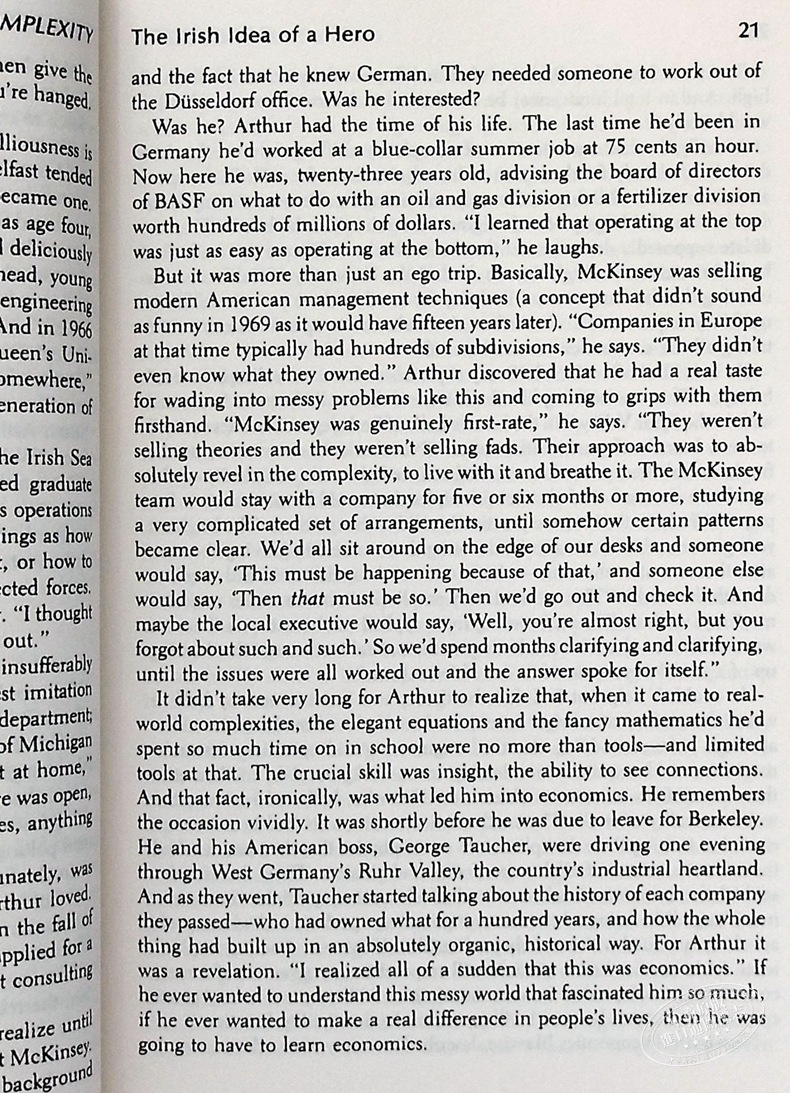

- 中商进口商城 (微信公众号认证)
- 中商进口商城为香港联合出版集团旗下中华商务贸易公司所运营的英美日韩港台原版图书销售平台,旨在向内地读者介绍、普及、引进最新最有价值的国外和港台图书和资讯。
- 扫描二维码,访问我们的微信店铺
- 随时随地的购物、客服咨询、查询订单和物流...
